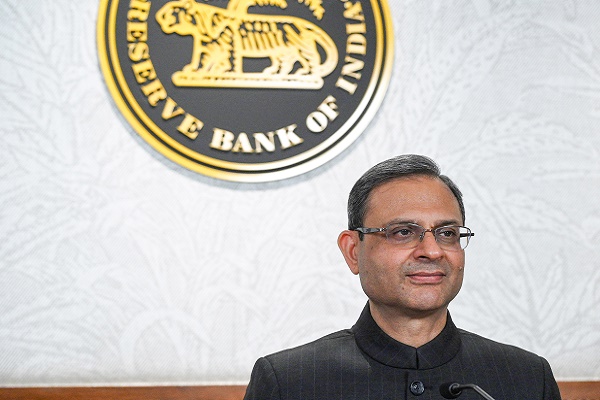Jeera trading range for the day is 52640-55200 - Kedia Advisory

Gold
The price of gold increased by 0.69% yesterday, closing at 60,736. This rise was primarily driven by strong demand for gold as a safe-haven asset and escalating geopolitical tensions in the Middle East. Federal Reserve Chair Jerome Powell's recent statements in New York had an impact as well, diminishing the likelihood of another US interest rate hike by year-end due to the prevailing tight monetary conditions in the US. Powell acknowledged the strength of the US economy and tightening labor market conditions, which could warrant an interest rate hike. However, he also noted that recent spikes in US Treasury yields have already tightened monetary conditions, potentially reducing the necessity for further rate hikes. Powell emphasized the Federal Reserve's commitment to maintaining a tight monetary stance to combat inflation. Following Powell's remarks, the probability of a 0.25% US interest rate hike in November plummeted from 10% to 2%, while the likelihood of a rate increase in the December meeting fell from 41% to 25%. Furthermore, Russia's gold reserves amounted to 75.0 million troy ounces, valued at $140.50 billion as of the beginning of October, as reported by the central bank. From a technical standpoint, the gold market saw an increase in open interest by 3.75%, reaching 15,319 contracts. Prices also surged by 418 rupees. Gold now finds support at 60,325, with a potential test of 59,915 if this level is breached. On the upside, resistance is expected around 61,135, and a break above this level could lead to a test of 61,535.
Trading Ideas
* Gold trading range for the day is 59915-61535.
* Gold rose on strong haven demand and mounting geopolitical tensions in the Middle East.
* Fedís Powell's hurt chances of another US interest rate hike before the year end amid the current tight US monetary conditions.
* Tensions continue to flare in the Middle East as the Israeli army continues to pound the Gaza strip with heavy air strikes before a likely ground attack.
Silver
Silver prices surged by 1.81% to settle at 72,909 due to strong haven demand driven by escalating geopolitical tensions in the Middle East. Meanwhile, positive data from China, showing better-than-expected economic growth in the third quarter, offered some relief. Federal Reserve Chair Jerome Powell hinted at the possibility of another interest rate hike due to the robust US economy and tightening labor conditions. Dallas Fed President Lorie Logan acknowledged the improved data and higher bond market borrowing costs, which give the central bank room for careful consideration regarding the next monetary policy move. On the employment front, the unexpected drop in new claims for unemployment benefits suggests continued strong job growth in October, despite a 13-year low in existing home sales in September. The Federal Reserve's report indicated that US economic activity remained relatively stable over the past month and a half, with a gradual easing of labor market tightness and modest price increases. Following Powell's remarks, the market adjusted its expectations, with the likelihood of a 0.25% US interest rate hike in November dropping from 10% to 2%. Additionally, the probability of a 0.25% interest rate increase at the Fed's December meeting decreased from 41% to 25%. From a technical standpoint, the market saw a 24.82% drop in open interest, settling at 15,954, while prices rose by 1,293 rupees. Silver finds support at 71,890, with the potential to test 70,865 levels on the downside. On the upside, resistance is expected at 73,770, and a breakthrough could push prices to test 74,625.
Trading Ideas:
* Silver trading range for the day is 70865-74625.
* Silver rose on strong haven demand amid mounting geopolitical tensions in the Middle East.
* China's economy grew better than expected in the third quarter as both retail sales and industrial production improved in September.
* Fed Chair Jerome Powell that US economy and tightening labor conditions could lead to another interest rate hike.
Crude oil
Crude oil prices rose by 0.49% to settle at 7366 per barrel, driven by several key factors. The announcement by the U.S. to replenish its strategic petroleum reserves contributed to this increase. Additionally, concerns about the Israel-Palestinians crisis spreading in the Middle East and disrupting oil supply from a major production region further supported prices. The U.S. Energy Ministry's plan to purchase 6 million barrels of crude for strategic reserves in December and January added to the market's bullish sentiment. The Energy Information Administration reported a significant 4.5 million-barrel drop in U.S. crude stocks to 419.7 million barrels, surpassing analyst expectations. Gasoline and distillate stocks also decreased, with gasoline down 2.4 million barrels to 223.3 million and distillates dropping 3.2 million barrels to 113.8 million. Notably, crude stocks at the Cushing, Oklahoma storage hub fell to their lowest levels since October 2014 at 21.01 million barrels. U.S. exports of petroleum products decreased to 5.36 million barrels per day, the lowest since October 2022. However, domestic crude production hit a record high of 13.2 million barrels per day. Technically, the market saw increased open interest, indicating fresh buying interest, and closed at 3700. Crude oil has found support at 7298 and could test 7229 if this level is breached. On the upside, resistance is anticipated at 7455, with a move above potentially pushing prices to 7543.
Trading Ideas:
* Crudeoil trading range for the day is 7229-7543.
* Crude oil prices climbed after the U.S. announced plans to replenish its strategic petroleum reserves.
* Global oil market already facing supply concerns
* US energy ministry said that Washington seeks to purchase 6 million barrels of crude to fill the strategic reserves in December and January.
Natural gas
Natural gas prices experienced a 1.55% decline, settling at 242, driven by record-high production, abundant storage, and low spot prices. This drop happened despite expectations of cooler weather, which should typically boost heating demand. Furthermore, natural gas exports to liquefied natural gas (LNG) facilities were nearing record levels. The U.S. Energy Information Administration (EIA) reported a significant increase of 97 billion cubic feet in gas storage for the week ending October 13, surpassing the 80-bcf forecast and outpacing the previous year's figure of 113 bcf. This also exceeded the five-year average increase of 85 bcf (2018-2022). Gas production in the Lower 48 U.S. states averaged 103.6 bcfd in October, up from 102.6 bcfd in September and a record high of 103.1 bcfd in July. The forecast indicates a temporary easing in U.S. gas demand to 96.9 bcfd next week due to milder weather before rising to 105.0 bcfd in two weeks as colder temperatures set in. These predictions align with LSEG's outlook. On the export front, pipeline shipments to Mexico decreased slightly to an average of 7.0 bcfd in October from a monthly record of 7.2 bcfd in September. From a technical perspective, the market has seen a decline in open interest by -5.86% to settle at 30838, alongside a price drop of -3.8 rupees. Natural gas is currently finding support at 238.7, with the possibility of testing 235.3 levels, while resistance is expected at 246.4. A move above this resistance could lead to prices testing 250.7.
Trading Ideas:
* Naturalgas trading range for the day is 235.3-250.7.
* Natural gas slid on record output, ample storage and low spot prices.
* That price decline came despite forecasts the weather would turn seasonally cooler through early November, which should boost heating demand.
* EIA said utilities added 97 billion cubic feet (bcf) of gas into storage
Copper
Copper prices saw a decline of -0.65% to settle at 696, primarily due to concerns about rising interest rates, sluggish global economic growth, and the absence of additional stimulus in China. China's GDP only grew by 4.9% in July-September, though some policy measures appear to be aiding a tentative economic recovery, as seen in consumption and industrial activity for September. On the supply side, copper inventories in Shanghai Futures Exchange warehouses increased by 2.3% compared to the previous week. China's refined copper production in September also surged by 14.5% year-on-year, reaching 1.14 million metric tons, with a daily average output of 38,000 tons throughout the month. Looking at the global copper market, the International Copper Study Group (ICSG) predicts a deficit of 27,000 metric tons for this year, shifting to a surplus of 467,000 tons in 2024. World refined copper usage is expected to rise by about 2% in 2023 and 2.7% in 2024, while production is forecasted to increase by approximately 3.8% in 2023 and 4.6% in 2024. From a technical perspective, the market is undergoing long liquidation, with a nearly 10% drop in open interest, settling at 5763. Copper's price decline of -4.55 rupees is significant. Support levels are currently at 693.6 and 691.2, while resistance is expected at 698.8, with potential for testing the 701.6 mark.
Trading Ideas:
* Copper trading range for the day is 691.2-701.6.
* Copper prices lower weighed down by worries about high interest rates, sluggish global growth
* China's gross domestic product grew 4.9% in July-September.
* Copper inventories in warehouses monitored by the Shanghai Futures Exchange rose 2.3% from last Friday.
Zinc
Zinc prices showed a 0.37% increase, settling at $219.65 yesterday. This uptrend was buoyed by expectations of China's economic recovery, reinforced by positive PMI data and the promise of more stimulus measures. Initially projected to be a deficit of 45,000 tons, it's now anticipated that the global refined zinc market will experience a surplus of 248,000 metric tons this year due to lower-than-expected demand. The world demand for refined zinc is forecast to increase by 1.1% in 2023, reaching 13.59 million tons, slightly below the April projection of 13.80 million tons due to tighter monetary conditions. ILZSG suggests that global refined zinc markets are expected to witness surpluses in 2023 and 2024. Specifically, zinc is predicted to have a surplus of 248,000 tons in 2023 and a surplus of 367,000 tons in 2024. Global demand for refined zinc is likely to grow by 1.1% to 13.59 million tons in 2023 and by 2.5% to 13.93 million tons in 2024. Looking at production, global refined zinc metal production is estimated to increase by 3.7% to 13.84 million tons in 2023 and by 3.3% to 14.30 million tons in 2024. This growth is primarily attributed to a substantial production increase in China. From a technical perspective, the market saw short covering, with a 12.15% drop in open interest, settling at 2,161. Prices also rose by 0.8 rupees. Zinc is currently finding support at the $218 level, and if it falls below, it could test the 216.4 level. On the upside, resistance is expected at 220.6, and if prices breach this level, they might test 221.6.
Trading Ideas:
* Zinc trading range for the day is 216.4-221.6.
* Zinc gains as the support comes from hopes for China's economic recovery.
* Also, expectations of reduced production from Europe and Australia limit the decline.
* The global refined zinc market is headed for a surplus of 248,000 metric tons this year
Aluminium
In yesterday's market, aluminum faced a slight setback with a 0.25% decline, closing at 202.2, primarily due to concerns about a hawkish Federal Reserve stance and the slowing Chinese economy, which dampened industrial sentiment. China, being the world's largest aluminum producer, took steps to prevent oversupply and high energy consumption from outdated infrastructure by halting the expansion of aluminum production capacity beyond 45 million tons. Despite this measure, China's primary aluminum output in September increased by 5.3% compared to the previous year. Furthermore, aluminum production in September experienced a significant jump in the southwestern Yunnan province, China's fourth-largest aluminum-producing region. This surge resulted from smelters ramping up operations, aided by improved hydropower supply starting from late June. It's also noteworthy that aluminum stocks on the Shanghai Futures Exchange hit their lowest point since March 2019, decreasing by 66% from the previous year. For the first nine months of 2023, China's primary aluminum output totaled 30.81 million tons, marking a 3.3% increase from the same period in 2022. Looking ahead to the fourth quarter, monthly output is expected to remain stable, ranging from 3.5 million to 3.6 million tons. From a technical perspective, the market is currently undergoing long liquidation. Open interest dropped by 12.18% to settle at 2336, while prices saw a decline of 0.5 rupees. Aluminum has immediate support at 201.6, and if it falls below that level, it may test the 201 mark. On the upside, resistance is expected at 202.7, and if prices breach this level, they could move towards 203.2.
Trading Ideas:
* Aluminium trading range for the day is 201-203.2.
* Aluminium dropped as the outlook of a hawkish Fed and a slowing Chinese economy.
* China's primary aluminium output in September rose 5.3% from a year earlier
* Primary aluminium output totalled 30.81 million tons in the first nine months of 2023, up 3.3% from 2022
Cotton
Cotton prices took a hit, settling at 58,100 due to concerns about reduced demand from China, with a decline of -0.89%. This dip was attributed to the USDA's October WASDE report, which reduced the U.S. cotton production forecast for 2023/24 to 12.8 million bales. The main reason for this cut was lower yields in Texas. Interestingly, Brazil is poised to overtake the U.S. in cotton production for the first time ever in 2023/24, and it's on the verge of surpassing U.S. cotton exports for the first time in over a century. Australia's cotton exports to China saw a significant surge in August, reaching 61,319 metric tons worth $130 million, the highest since July 2014. This was due to improving trade relations between the two nations. Meanwhile, the Cotton Association of India (CAI) raised its estimate for the 2022-23 cotton crop production to 31.8 million bales, higher than the government's estimate of 34.3 million bales. For the 2023-2024 cotton season in India, it's anticipated that cotton production will range from 33 to 34 million bales. However, unfavorable conditions led to a decrease in cotton cultivation in certain parts of Telangana. Cotton picking is set to pick up in the coming weeks. In the technical realm, the cotton market is currently experiencing long liquidation, with a drop in open interest by -3.48% and a price decrease of -520 rupees. Key support levels for Cottoncandy are at 57,840 and 57,570, while resistance is likely at 58,540, with the potential to test 58,970.
Trading Ideas:
* Cottoncandy trading range for the day is 57570-58970.
* Cotton dropped as concerns over demand from top consumer China weighed.
* The USDA also said Brazil's cotton production in 2023/24 will exceed that of the United States for the first time
* Australia's exports of cotton to China ballooned to 61,319 metric tons worth $130 million in August
* In Rajkot, a major spot market, the price ended at 27463.45 Rupees dropped by -0.15 percent.
Turmeric
Turmeric prices showed a modest increase of 0.38% to reach 13,744 due to concerns about potential yield losses caused by unfavorable October weather. However, these gains are limited by improved crop conditions resulting from favorable weather. The crop is expected to be ready for harvest between January and March. The India Meteorological Department (IMD) predicts drier-than-average conditions in October, affecting crop growth. On a positive note, strong buying activity and decreasing supplies are expected to maintain price stability. Additionally, there's support for increased export opportunities as turmeric demand has risen in both developed and emerging nations, leading to a 25% growth in exports. The expectation of a 20-25% decline in turmeric seeding this year, especially in states like Maharashtra, Tamil Nadu, Andhra Pradesh, and Telangana, is due to shifting priorities among farmers. From April to August 2023, turmeric exports rose by 11.51%, with a notable drop in August compared to July 2023. In terms of technical analysis, the market has seen fresh buying with a 0.14% increase in open interest, settling at 14,430. Prices are up by 52 rupees. Turmeric has support at 13,440 and potential resistance at 13,926, with a move above possibly leading to prices testing 14,110.
Trading Ideas:
* Turmeric trading range for the day is 13138-14110.
* Turmeric gained due to the potential for yield losses caused by the crop's anticipated unfavourable October weather.
* However upside seen limited amid improved crop condition due to favorable weather condition.
* Support is also evident for improved export opportunities.
* In Nizamabad, a major spot market, the price ended at 13567 Rupees dropped by -0.82 percent.
Jeera
Jeera prices experienced a 1.02% increase, settling at 54,245 due to limited high-quality crop availability. However, this uptrend was tempered by profit booking and subdued demand caused by sluggish export interest. Global demand for Indian jeera dwindled as buyers turned to other sources like Syria and Turkey due to the comparatively higher prices in India. Export activities are expected to remain sluggish in the coming months. Despite India's competitive pricing in the global market, this advantage hasn't translated into increased exports. China, a significant Indian jeera buyer, has reduced its purchases recently, impacting overall Indian exports. The uncertainty surrounding China's potential purchases in October-November adds to market dynamics. Additionally, drier weather conditions in Gujarat are expected to boost arrivals, capping upward price movements. Looking at the supply-demand scenario, FISS forecasts suggest that cumin demand may surpass supply this year, with a supply of 65 lakh bags against a predicted demand of over 85 lakh bags. Jeera exports from April to August 2023 dropped by 23.76% compared to the same period in 2022, with August 2023 exports decreasing by 2.61% compared to July 2023 and a significant 66.98% drop compared to August 2022. In Unjha, a major spot market, jeera prices closed at 56,109.85 Rupees, marking a 0.7% decrease. From a technical perspective, the market is witnessing short-covering, with open interest remaining unchanged at 4,503 while prices increased by 550 Rupees. Jeera's support is currently at 53,440, and a drop below could test levels at 52,640. Resistance is likely at 54,720, and a move above may lead to prices testing 55,200.
Trading Ideas:
* Jeera trading range for the day is 52640-55200.
* Jeera gains amid limited availability of quality crop.
* Global demand of Indian jeera slumped as most of buyers preferred other destinations like Syria and Turkey
* Export is likely to remain down in upcoming months as per the export seasonality.
* In Unjha, a major spot market, the price ended at 56109.85 Rupees dropped by -0.7 percent.
Views express by all participants are for information & academic purpose only. Kindly read disclaimer before referring below views. Click Here For Disclaimer























